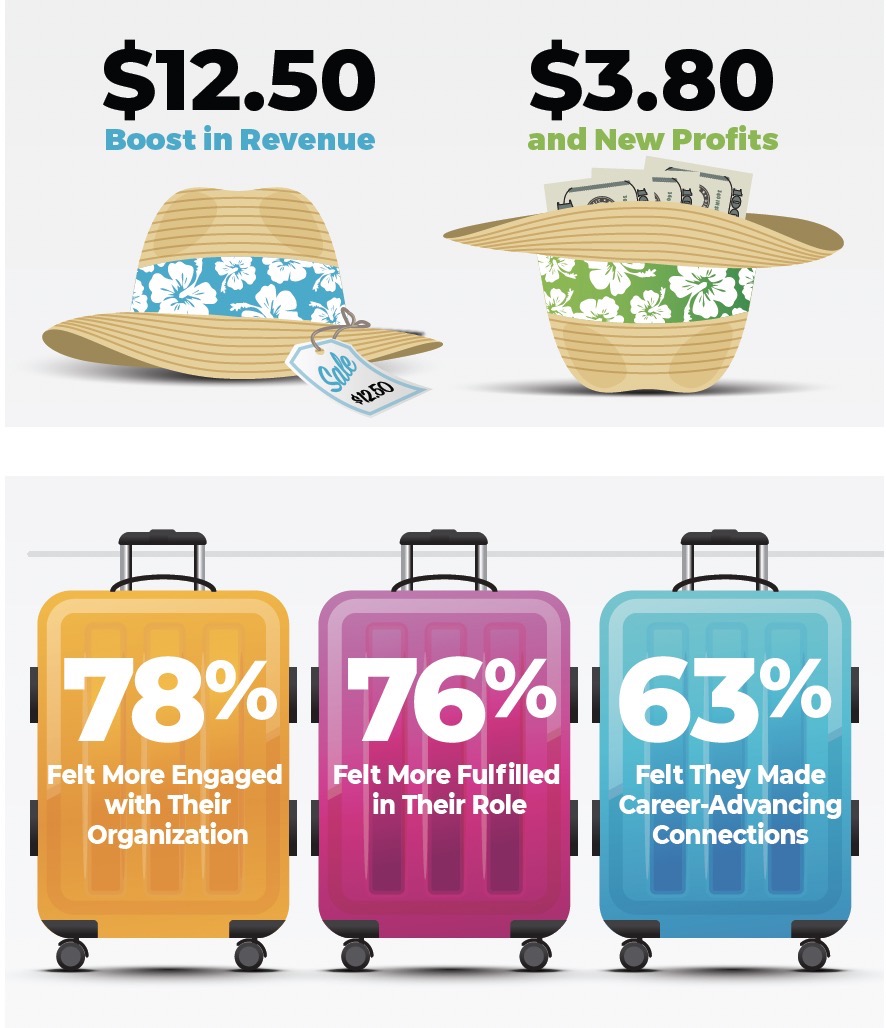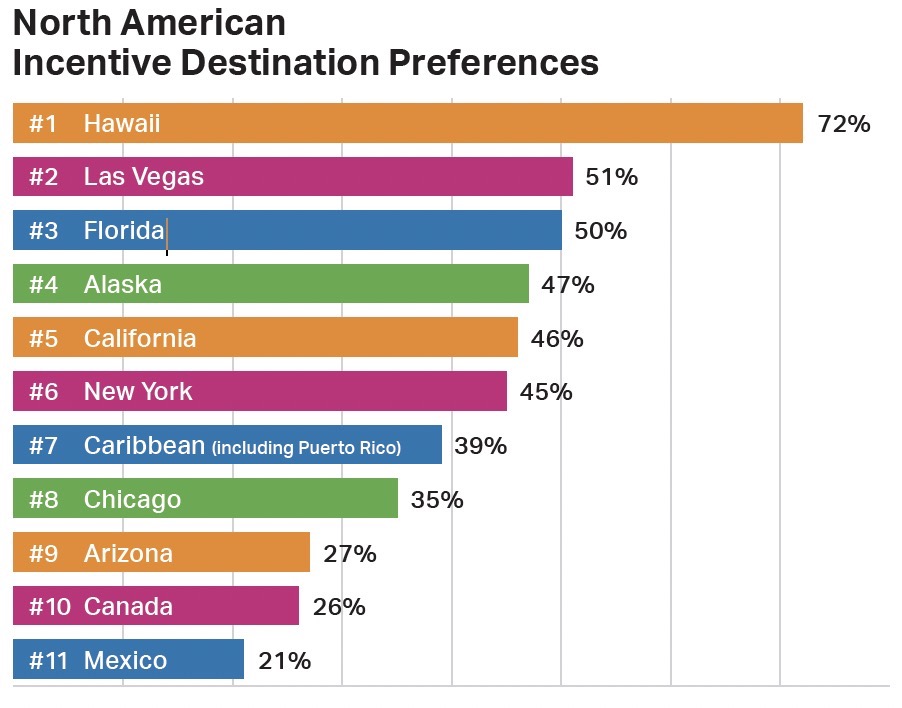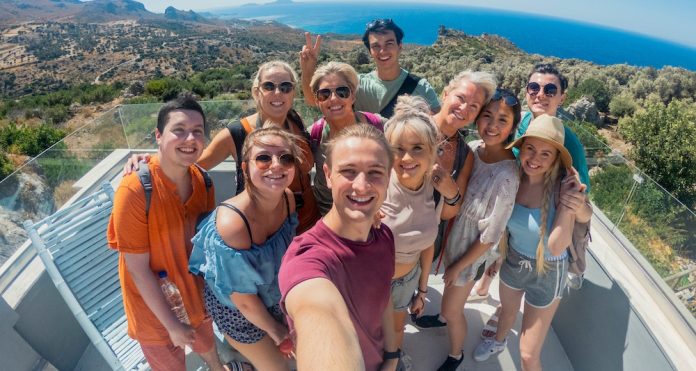Bringing top performers to an exotic location to bond, build relationships and celebrate their success is a time-tested tool for getting sales and non-sales employees alike to reach stretch goals and increase company loyalty. However, today’s incentive travel programs have few similarities with the President’s Club events of 20 or even 10 years ago.
For starters, companies are assembling workforces that feature four generations, from Baby Boomers through Gen Z. Adapting to the differences of these age groups in the office (when there is an office) is challenging enough. Creating an offsite event for all of them that is compelling, memorable and aspirational is another thing altogether.
No Doubting the ROI
One thing hasn’t changed over the decades. Group incentive travel for employees and channel partners is highly effective. The Society for Incentive Travel Excellence (SITE) reports that:
- 78% of incentive travel program participants feel more engaged with their company.
- 76% of participants feel more fulfilled in their
- 63% of participants make career-advancing connections during these events.
“What [incentive travel] does is motivate me to stay with the company. That’s just one more extra thing my company does for me. It motivates me to stay put,” a respondent to a SITE program participants survey stated.
According to SITE Global, for every dollar spent on travel, businesses get an average boost of $12.50 in revenue and $3.80 in new profits. More than half (53%) of senior leaders feel incentive travel is a “need to have,” while 48% feel that it is a “strategic differentiator.”

It’s because they are so effective that incentive travel programs have been a staple of motivating with non-cash recognition for decades. However, increased costs — transportation, food, hotels and entertainment — are making these programs a tougher sell to the C-suite.
When structured properly, the improved performance (i.e., increased revenue) these programs drive should more than cover the cost of the programs themselves. Speaking in a SITE- sponsored webinar recently, Kimberly Napolitano, executive director of industry relations & intermediary group sales at Hilton Worldwide, said her group talks facts first when working with sponsors of corporate travel programs.
“Data is the C-suite’s love language,” Napolitano said. “Facts drive these leaders, who want to see clear evidence of any initiative’s return on investment. To secure strong buy-in for an event, I suggest anyone’s messaging highlight the tangible benefits and outcomes that align with the company’s strategic objectives. Demonstrate how the experience will contribute to the company’s key business goals. We want people to know that our meetings and events are a strategic asset to the organization.”
Know Your Participants’ Preferences
Once a company commits to sponsoring an incentive travel program, it’s important to understand what drives maximum motivation to qualify for the trip. Stephanie Harris, president of the Incentive Research Foundation (IRF), said it continues to confound her from the surveys they conduct is the discrepancy between participants’ preference in destinations and the actual destinations selected by program sponsors.
The IRF has surveyed program participants four years in a row. Among the North American destinations evaluated, Mexico, Canada and Arizona are the least likely to be selected as a top-three preferred destination, yet Cvent data shows in 2024, nine of the top 10 booking destinations for incentive destinations are in Mexico or the Caribbean.
“I understand a lot of that could be budget-driven or the comfort level of the C-level executives, but I think they’d be surprised at the difference in effort people would make to earn a destination that is really appealing to them,” Harris said.
It should be noted that even the less-preferred destinations are highly rated by participants in terms of attractiveness for a leisure vacation.

Other highlights from the most recent IRF survey of program participants include:
- The appeal of incentive travel is very high; even the least- preferred trip destinations and features are appealing and motivating to attendees.
- 2024’s top North American leisure destinations preferred by qualified employees include past favorites such as Hawaii, Las Vegas and Florida.
- When traveling within North America, respondents said the ideal length or a trip is four to six days (52%), with 33% desiring seven to 10 days. For international incentive travel programs, 40% request seven to 10 days, another 23% says 10 days, and another 20% desire more than 10 days.
- The features that incentive travel recipients desire most in a destination isn’t a shocker — a nice beach and sunny Also listed in order were adventure travel; mountains; a historical location; and a wooded ornature area
- The top three drivers of a positive incentive travel experience in order are ample free time, unique experiences built into the itinerary, luxury accommodations and experiences.
Destination and Design
According to the IRF participants survey, an attractive destination and creative program design are the two key ingredients to produce a program that leaves participants eager to qualify for next year’s program.
“Destination can be a huge ‘wow’ factor at the point of the announcement in particular,” Harris said. “Destination really impacts the program design in terms of what experiences you can offer, what local culture you can bring to the table, and what food and beverage design can make an impact on the experience that attendees have.
“Destination has the biggest impact. However, I have seen some fantastic programs designed in destinations that might feel less motivating at the outset,” she added. “Planners can take advantage of what’s unique or what’s little-known about that destination and design a really successful program.”
Destination can help make an incentive travel experience more memorable, but it can’t do it on its own. Your design should include new experiences, preferably ones that your participants may not be able to access on their own.
As a result of younger workers being part of incentive travel events, so-called thrill experiences are a more common component of the design. Think ziplining, bridge-climbing or other adventures that take advantage of a destination’s natural or architectural features. You don’t want to pressure anyone into participating in something they’re not comfortable with, Harris said, but you do want to present the opportunity for participants to experience something they haven’t done before.
Speaking of those younger participants, IRF research shows that while incentive travel opportunities are highly motivating to all age groups, Gen Z and Millennials find them even more motivating than Gen Xers and Baby Boomers. Harris said one reason for this may be the shift to remote working has left younger workers hungry for camaraderie and opportunities to celebrate success together.
Increasing interest across all age groups in seeing new places and having new experiences sets employers up to create incentive travel programs that can produce unimaginable ROI. Incentive travel has long been the top-rated non-cash reward among workers. With the right destination and a killer design, the motivational impact of incentive travel is as big as the world itself.






